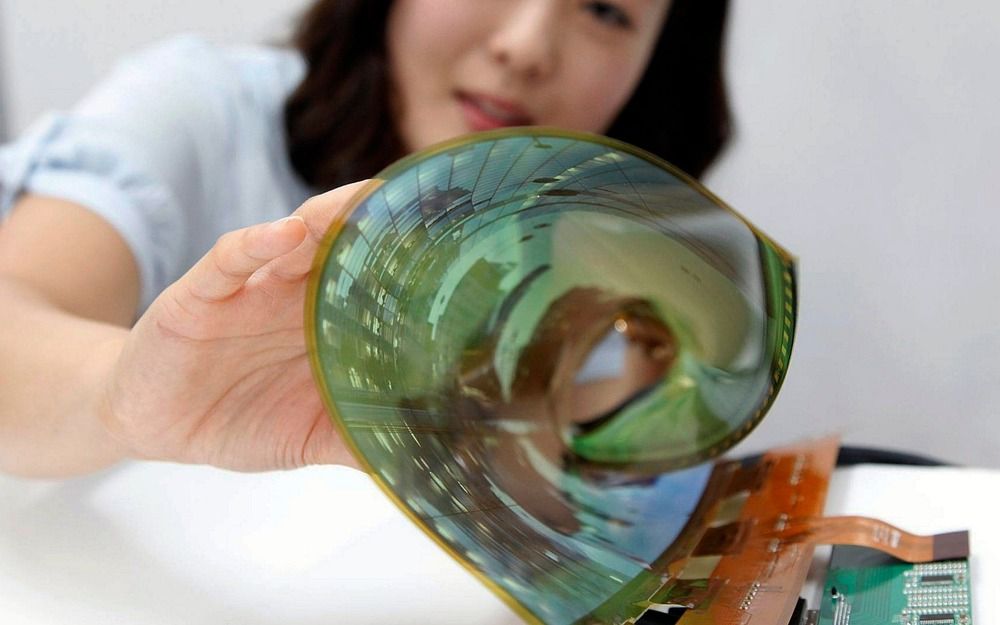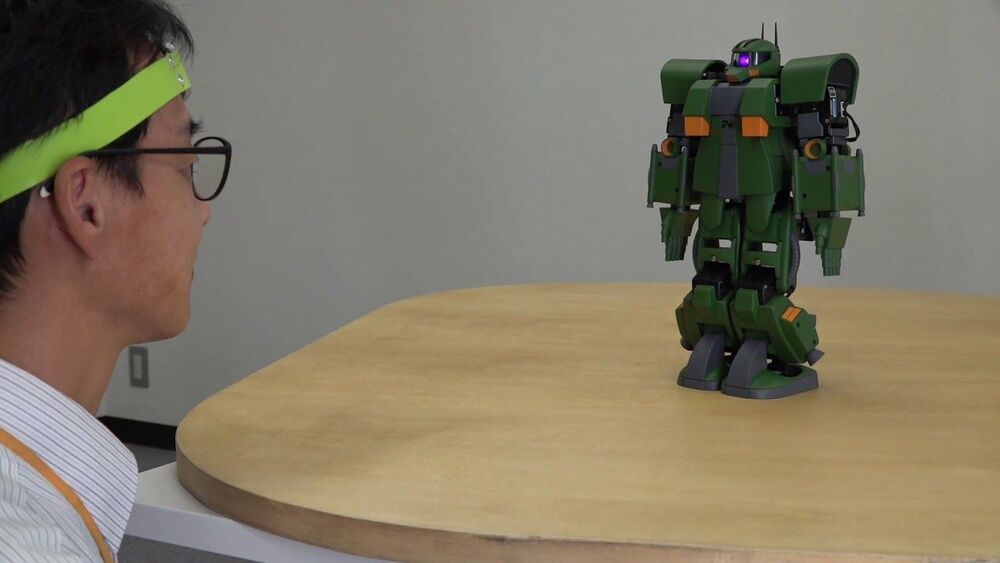Let’s Encrypt has warned that older Android phones won’t support many secure websites after they lose key certificates by September 2021.



This article was published as a part of the Data Science Blogathon.
Introduction
Computer Vision is evolving from the emerging stage and the result is incredibly useful in various applications. It is in our mobile phone cameras which are able to recognize faces. It is available in self-driving cars to recognize traffic signals, signs, and pedestrians. Also, it is in industrial robots to monitor problems and navigating around co-workers.


Japanese scientists have created a device that allows anyone to control a mini toy Gundam robot, one of anime’s most popular fictional battle robots, with their mind.
The researchers customized a mobile suit Zaku Gundam robot toy available through Bandai’s Zeonic Technics line that allows buyers to manually program their robot using a smartphone app.
For the mind-controlled prototype, researchers for NeU, a joint venture between Tohoku University and Hitachi, developed a version that moves in response to brain activity.

SUBSCRIBE for the OUTDOOR TEST ► http://goo.gl/MU4hNA
Music credits below:
Become a Hacksmith member get exclusive perks! ► https://www.youtube.com/channel/UCjgpFI5dU-D1-kh9H1muoxQ/join
►Early video access
►Project design files (solidworks)
►Merch Discounts
►Colaborate with us on our videos
SOCIAL
Website ► http://www.hacksmith.tech
Facebook ► http://www.facebook.com/thehacksmith
Instagram ► http://www.instagram.com/thehacksmith
Twitter ► http://twitter.com/thehacksmith
Patreon ► http://www.patreon.com/thehacksmith
Discord ► https://discordapp.com/invite/thehacksmith
Merch ► https://www.hacksmith.store
SOFTWARE:
Video Review / Collaboration ► http://r.frame.io/pZq3N
Video Editing ► Adobe Premiere
CAD ► Solidworks
CAMERA GEAR:
Highspeed Cam — Chronos 1.4 ► https://goo.gl/t7eCGG
Main shooter — Panasonic GH5s ► https://bhpho.to/2Fjd80N
Phone — Samsung Note 8 ► https://bhpho.to/2DnDicX
B Camera — Sony RX10ii ► https://bhpho.to/2Dp9r3y
Camcorder — Sony Handycam ► https://bhpho.to/2FDnq81
Slow Motion (960fps) — Sony RX10ii ► https://bhpho.to/2Dp9r3y
Slow Motion (240fps) — Panasonic GH5s ► https://bhpho.to/2Fjd80N
Action Cam — GoPro ► https://bhpho.to/2FxXDC4
Steadicam — Osmo ► https://bhpho.to/2GreBj2
Main mic — Sennheiser ► https://bhpho.to/2DsR8ec
Bendy Tripod ► https://bhpho.to/2FyLNb0
Main Tripods — old second hand Manfrotto tripods no longer sold.
TOOLS / MACHINES:
CNC Plasma Cutter ► https://goo.gl/UurkwX
3D Printers — Taz 6 ► http://amzn.to/2FVe3Uq
Moarstruder ► http://amzn.to/2DpbcOc
Filament ► http://amzn.to/2FGnt2R
CNC Mill ► https://goo.gl/7Cnk48
CNC Lathe ► https://goo.gl/QUUjxT
Laser Cutter — Gweike LG900N 80W ► https://www.google.com/search?q=lg900n
3D Scanner ► http://amzn.to/2pwbvTu
Drills, drivers, grinders, saws, etc ► http://amzn.to/2p9SPJ3
Welder ► https://goo.gl/QmTT4S
Desktop PC ► https://youtu.be/gSbt3LK8hCs

Japanese researches control Gundam robot using their mind.
Japanese scientists have created a device that controls a mini toy Gundam robot using the human mind, turning one of the anime’s most exciting technological concepts into reality.
The researchers customized a Zaku Gundam robot toy available through Bandai’s Zeonic Technics, but buyers have to manually program their robot using a smartphone app.
The prototype is a joint venture between Tohoku University and Hitachi, where they developed a version that moves in response to brain activity.

Another argument for government to bring AI into its quantum computing program is the fact that the United States is a world leader in the development of computer intelligence. Congress is close to passing the AI in Government Act, which would encourage all federal agencies to identify areas where artificial intelligences could be deployed. And government partners like Google are making some amazing strides in AI, even creating a computer intelligence that can easily pass a Turing test over the phone by seeming like a normal human, no matter who it’s talking with. It would probably be relatively easy for Google to merge some of its AI development with its quantum efforts.
The other aspect that makes merging quantum computing with AI so interesting is that the AI could probably help to reduce some of the so-called noise of the quantum results. I’ve always said that the way forward for quantum computing right now is by pairing a quantum machine with a traditional supercomputer. The quantum computer could return results like it always does, with the correct outcome muddled in with a lot of wrong answers, and then humans would program a traditional supercomputer to help eliminate the erroneous results. The problem with that approach is that it’s fairly labor intensive, and you still have the bottleneck of having to run results through a normal computing infrastructure. It would be a lot faster than giving the entire problem to the supercomputer because you are only fact-checking a limited number of results paired down by the quantum machine, but it would still have to work on each of them one at a time.
But imagine if we could simply train an AI to look at the data coming from the quantum machine, figure out what makes sense and what is probably wrong without human intervention. If that AI were driven by a quantum computer too, the results could be returned without any hardware-based delays. And if we also employed machine learning, then the AI could get better over time. The more problems being fed to it, the more accurate it would get.

For those who are excited about 6G. 😃
Electromagnetic waves are characterized by a wavelength and a frequency; the wavelength is the distance a cycle of the wave covers (peak to peak or trough to trough, for example), and the frequency is the number of waves that pass a given point in one second. Cellphones use miniature radios to pick up electromagnetic signals and convert those signals into the sights and sounds on your phone.
4G wireless networks run on millimeter waves on the low- and mid-band spectrum, defined as a frequency of a little less (low-band) and a little more (mid-band) than one gigahertz (or one billion cycles per second). 5G kicked that up several notches by adding even higher frequency millimeter waves of up to 300 gigahertz, or 300 billion cycles per second. Data transmitted at those higher frequencies tends to be information-dense—like video—because they’re much faster.
The 6G chip kicks 5G up several more notches. It can transmit waves at more than three times the frequency of 5G: one terahertz, or a trillion cycles per second. The team says this yields a data rate of 11 gigabits per second. While that’s faster than the fastest 5G will get, it’s only the beginning for 6G. One wireless communications expert even estimates 6G networks could handle rates up to 8,000 gigabits per second; they’ll also have much lower latency and higher bandwidth than 5G.

